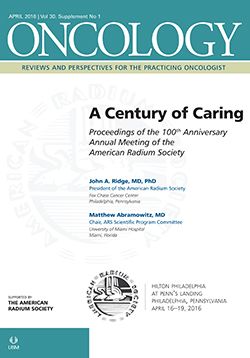(S051) Disparities in Access and Treatment of Patients With High-Risk Prostate Cancer: Results From a Population-Based Cohort
Our findings suggest that differential treatment access alone does not explain racial disparities and that sociodemographic forces, such as referral patterns and provider biases, may heavily influence what should be a clinical decision regarding treatment provision and receipt.
Elyn H. Wang, BS, Cary P. Gross, MD, James B. Yu, MD, MHS, Nilay D. Shah, PhD, Robert Abouassally, MD, Edward E. Cherullo, MD, Shan Dong, Quoc-Dien Trinh, MD, Paul L. Nguyen, MD, Maxine Sun, MPH, Simon P. Kim, MD; Yale University School of Medicine; Division of Health Care Policy and Research, Mayo Clinic; Urology Institute, University Hospitals Case Medical Center, Case Western Reserve University; Harvard Medical School; University of Montreal
INTRODUCTION: Racial disparities in the treatment and outcomes of prostate cancer (PCa) are a well-recognized public health problem. However, whether receipt of treatment varies by race across different types of hospitals remains poorly described. Therefore, we sought to evaluate the variation in primary treatment of high-risk PCa based on different hospital characteristics in the US.
METHODS: We used the National Cancer Data Base (NCDB) to identify patients diagnosed with pretreatment high-risk PCa from 2004–2011. The primary outcomes were different forms of primary therapy received or no treatment across different types of hospitals (community, comprehensive community, and academic hospitals). Multivariable logistic regression analyses were used to test for differences in treatment by hospital type.
RESULTS: During the study period, we identified 102,701 men diagnosed with high-risk PCa. Overall, radical prostatectomy (RP) (37.0%) was the most common treatment, followed by external beam radiation therapy (EBRT) (33.2%), while 8.5% of patients received no treatment. When stratified by hospital type, black patients were less likely to undergo RP at comprehensive community hospitals (adjusted odds ratio [OR], 0.64; P < .001) and academic (adjusted OR, 0.62; P < .001) hospitals, compared with white patients. However, EBRT was used more often among black men treated at comprehensive community (adjusted OR, 1.27; P < .001) and academic (adjusted OR, 1.23; P < .001) hospitals. Furthermore, black patients were more likely not to receive treatment for high-risk PCa compared with white patients across all hospital types (P < .001).
CONCLUSIONS: Our study indicates that treatment disparities persist across various hospital types and that improving access to tertiary referral hospitals will not suffice to reduce current racial disparities in PCa treatment. Our findings suggest that differential treatment access alone does not explain racial disparities and that sociodemographic forces, such as referral patterns and provider biases, may heavily influence what should be a clinical decision regarding treatment provision and receipt.
Proceedings of the 98th Annual Meeting of the American Radium Society -americanradiumsociety.org
